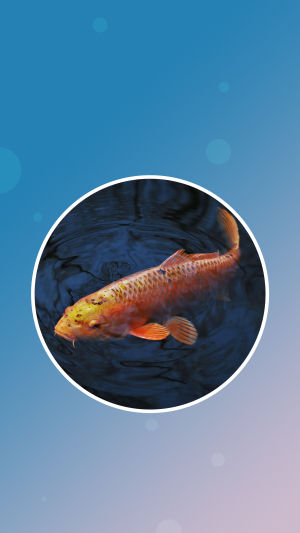Koi originated in China, flourished in Japan, and then returned to China.
Today, Koi are increasingly loved for their unique masculine beauty, and are known as the "King of Ornamental Fish".
The carp family is the largest family of all fish species, with over 1,400 species. It is one of the most popular ornamental fish in the world today, and is known as a "living gem in the water" and a "swimming artwork".
It is popular because it does not require high water quality, has a mixed diet, and is easy to breed. It is easy to breed and raise, has a mixed diet, and usually does not require high water quality for general breeding. Koi are carp that have colors and patterns for people to enjoy. Some koi are also edible.
Koi are highly adaptable to their environment, adapting to temperatures of 2 to 30°C. However, they cannot resist rapid changes in water temperature and are susceptible to disease when the temperature drops or rises 2 to 3℃.
If the temperature rises or falls up to 7-8℃, the fish creep onto the bottom of the water and do not eat. If the temperature change is even greater, the koi may even die immediately. The most suitable water temperature for koi is 20-25℃. In this water temperature, koi are active, have a strong appetite, and have bright colors.
Koi have been considered auspicious by the Chinese since ancient times and are often kept in yard ponds to signify good luck.
With the spread of Koi culture in recent years, Koi have become increasingly popular as a lucky fish.
Koi is known as the "living jewels of the water" and they have three meanings.
1. Koi have a high ornamental value.
When they are placed in a pond, they are colorful and pleasing to the eye. They are as bright and eye-catching as gems.
2. Koi also play a very important role in promoting better water quality and removing dirt. Their presence can make the water clean and vibrant.
3. Koi are extremely valuable for their ability to retain good luck. As a result, koi have become a popular "lucky fish".
Koi represent gentleness and elegance.
Koi have a rich cultural connotation. Koi like to swim in groups, have a gentle disposition, and swim with grace and ease. Koi are loved and revered for both their outward serenity and their inner qualities.
Koi symbolizes good luck.
The Chinese have a preference for the color red, and every year during the Chinese New Year, everyone likes to decorate their homes in red, both in costume and in dress, which represents good luck. Koi are mostly red in color, which caters to the preferences of the Chinese people and is unconsciously thought to represent good luck.
Koi also represent health.
Koi live a very long life. The average lifespan is over 70 years, and the longest-lived koi on record is now over 200 years old. In addition, it can grow with people and is very memorable, which is why people often choose to feed koi.
Koi represents all the best in the world. After you see koi remember to make a wish, maybe the wish will come true.





